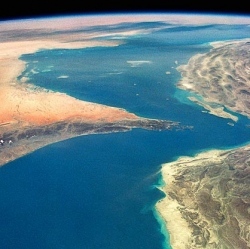
Tonight SpaceX successfully recovered yet another rocket, making it their fifth one in total. Elon Musk’s rocket company launched their two-stage Falcon 9 vehicle from Cape Canaveral at 9:45 pm PT tonight and subsequently recovered the first stage of that rocket back on land.
The landing marks the second time SpaceX recovered a rocket on land and their fifth recovered first stage in all.
Elon Musk’s rocket company launched their two-stage Falcon 9 vehicle from Cape Canaveral at 9:45 pm PT tonight and subsequently recovered the first stage of that rocket back on land. The landing marks the second time SpaceX recovered a rocket on land and their fifth recovered first stage in all.
The Falcon 9 first stage was returned to what was known as “Landing Zone 1” in Cape Canaveral, Florida, about eight minutes after launch.
SpaceX had previously completed four successful rocket recoveries in all: one on land, and three on a drone ship out at sea. Today was the first time SpaceX attempted to bring a rocket back to land since their successful land-based recovery back in December.
Ideally, SpaceX would always be able to attempt rocket landings on solid ground. A landing pad on solid ground is more stable than one at sea. Plus, if you have to land a rocket at sea there’s an additional time and cost of having to move it onto land after the launch.
Unfortunately, however, a land-based recovery is not always a possibility. For example, today was SpaceX’s seventh mission of the year, and only the first time (this year) that they were able to attempt a ground-based recovery.
For missions like today, where a rocket “only” needs to deliver supplies to low earth orbit, it is less complex to direct a first stage to a recovery location on land.
But many other launches require supplies to be sent much higher (and go much faster), like for many commercial satellite launches. For these missions, the first stage will initially be moving much faster and there may not be enough fuel to navigate it efficiently back to land. Because of this, SpaceX is working hard to perfect recoveries on their autonomous drone ship out at sea.
While successful, today’s rocket landing was only a secondary goal of the launch. To accomplish the primary goal of today’s mission, SpaceX’s Dragon capsule will be delivering supplies to the International Space Station. As their ninth resupply mission to the ISS (known as CRS-9), Dragon will be bringing with it nearly 5,000 pounds of cargo and research experiments to the astronauts on station.
Dragon is scheduled to arrive at the ISS in a couple days, on the morning of July 20th. Once it’s time to send Dragon home, it will be loaded with supplies that need to come back to Earth. Dragon is currently the only vehicle capable of bringing supplies in a pressurized environment back from the ISS.
SpaceX is working to recover first stages so that they can eventually reuse them on future launches and reduce the overall costs of rocket launches. While they have yet to re-use a recovered rocket, Musk has recently stated that they are aiming for a reflight in September/ October timeframe.
